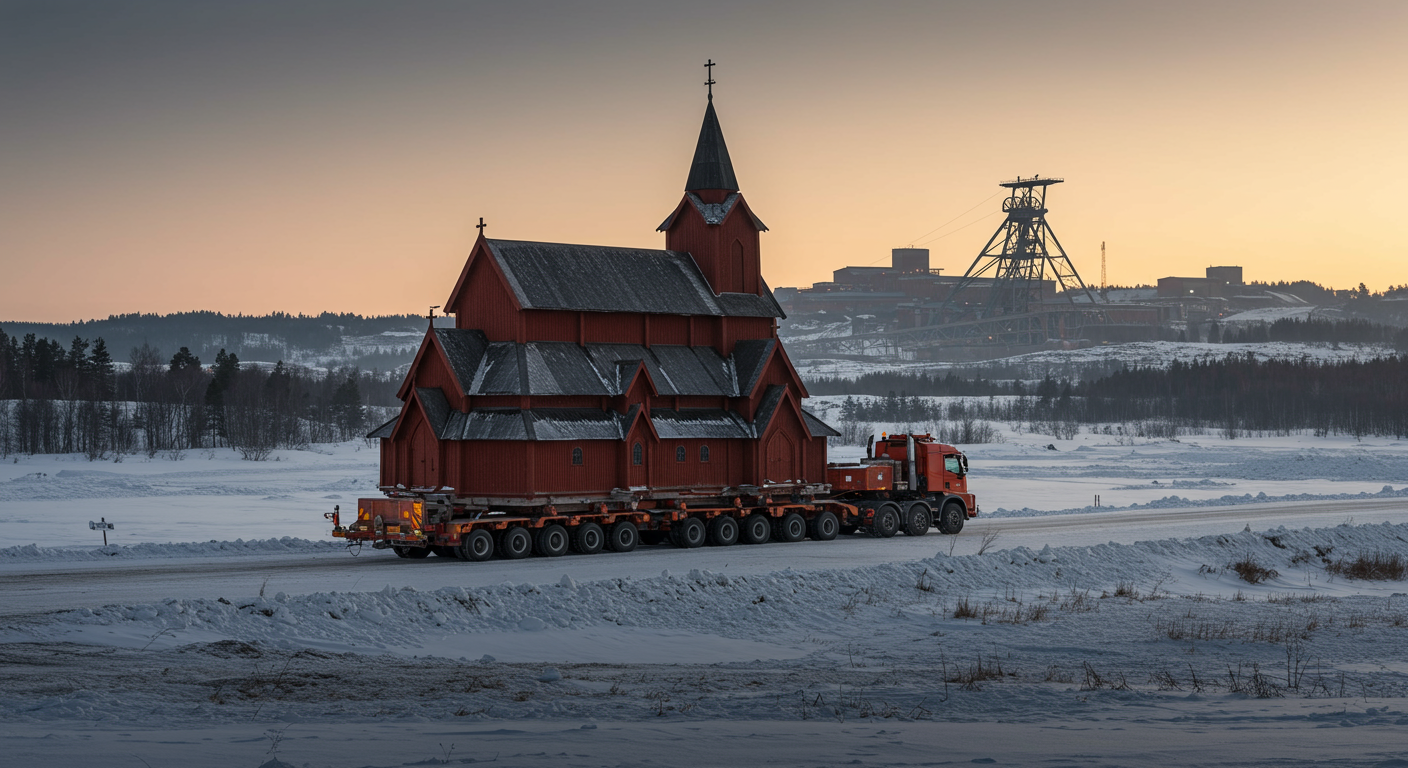The Colossal Migration: How Sweden Moved a 600-Ton Church to Save a Sinking City
To save itself from the collapsing ground caused by an expanding iron ore mine, the entire Swedish town of Kiruna is being moved. The project's centerpiece is the single-piece relocation of its historic 600-ton wooden church, built in 1912, on a giant trailer.

In the far north of Sweden, well inside the Arctic Circle, the town of Kiruna is performing an act of self-preservation on an almost unimaginable scale. For over a century, its very existence has been tied to the world's largest underground iron ore mine. Now, that same mine threatens to swallow the town whole, as decades of excavation have rendered the ground unstable. The solution is as radical as it is necessary: move the entire city center three kilometers to the east.
The Heart of the Migration
While many structures are being demolished and rebuilt, some are too precious to lose. At the center of this monumental effort is the Kiruna Church, a 600-ton national treasure consecrated in 1912. Voted Sweden's most beautiful building, its distinctive red-timber frame was inspired by the traditional goahti dwellings of the indigenous Sámi people, creating a sanctuary affectionately known as "the people's living room." For the residents of Kiruna, losing the church would mean losing a piece of their collective soul.
A Journey of Millimeters and Miles
Transporting a century-old, 600-ton wooden structure is a delicate and complex ballet of engineering. The church was not dismantled. Instead, it was carefully lifted from its foundation, reinforced, and placed onto a massive, custom-built platform of trailers. Over the course of several days, the entire building was painstakingly moved along a specially prepared route at a walking pace. The event, a testament to modern engineering and cultural commitment, was broadcast live in the popular "slow TV" format, allowing the world to watch the deliberate, nail-biting journey in real-time.
The challenge isn't the weight, but the fact that it is a wooden church from 1912 with a very high cultural value. Everything must be done with extreme caution.
This great migration is more than an infrastructure project; it's a story of a community's resilience. The mining company, LKAB, is footing the bill for the entire city's relocation, a tacit acknowledgment of its role in this existential dilemma. By moving their beloved church piece by whole piece, the people of Kiruna aren't just saving a building—they are carefully carrying their history and identity into the future.

 in
in